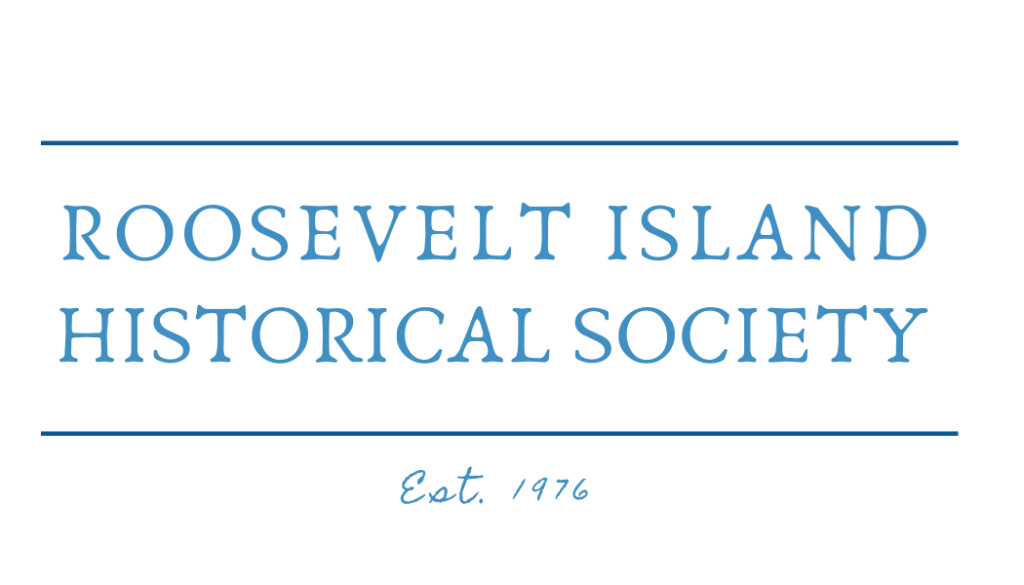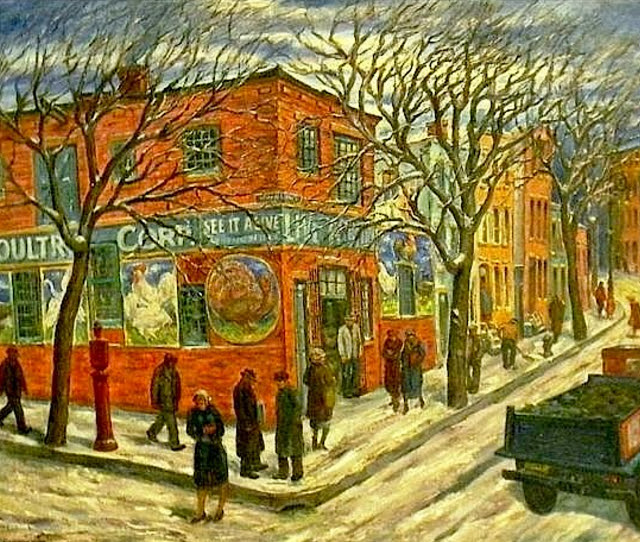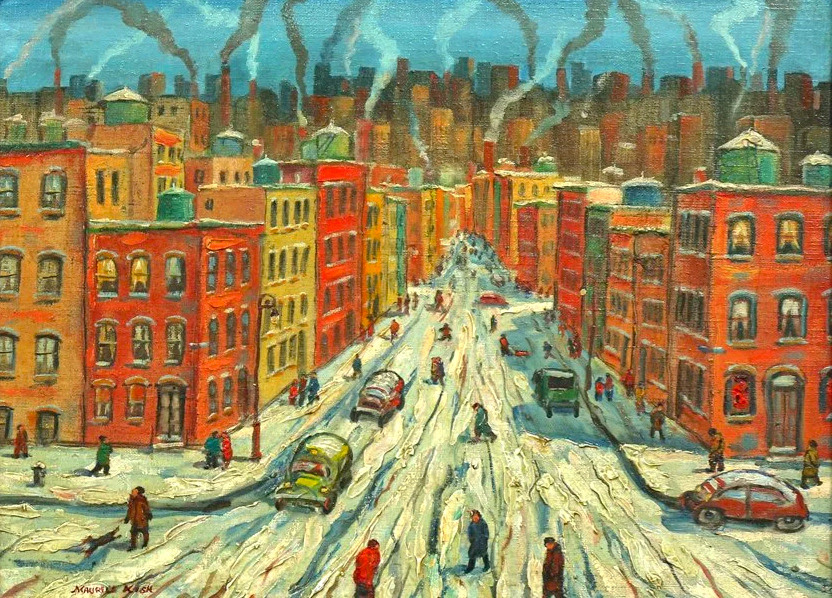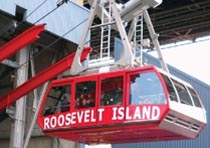Tuesday, April 22, 2025 – Before Williamsburg was a hip neighborhood


A painter who lived in
Depression-era Williamsburg
captured the struggle of the
neighborhood around him
Ephemeral New York
Tuesday, April 22, 2025
ISSUE #1431
In the middle decades of the 20th century, Maurice Kish was probably not unlike many of his South Williamsburg neighbors.

[“Poultry Market,” 1940]
Born in Russia in 1895, he immigrated to New York as a teenager, settling in Brownsville with his family. He served in the military and left it in 1919.
Like so many other immigrants, Kish held a hodgepodge of jobs including “poet, amateur boxer, Catskills dance instructor, and factory worker in New York City, where he painted flowers on glass vases,” according to the Smithsonian Institute.
Kish also became a labor activist, a not uncommon cause in a New York hit hard by the Depression. By the 1940s he’d settled into a tenement at 70 South Third Street in Williamsburg with his two brothers and a fourth man identified in the 1950 census as a lodger.

“End of Day’s Toil,” 1932
But what set Kish apart was his talent and passion as a painter. Schooled at Cooper Union and the National Academy of Design, he often used his skills to focus on the work and economic struggles in the neighborhood around him.
“As an artist, Kish’s main subjects were cities and the human activity within; a labor activist, he used his canvases as a vehicle for telling the stories of industrial workers,” states the Smithsonian Institute.
Williamsburg must have provided plenty of material. His apartment would have been close to the East River waterfront, where thousands of workers toiled at industrial sites like the Domino Sugar Factory, which features in his 1932 painting “End of Day’s Toil.”

“Job Seekers,” 1932
“The men’s bowed heads convey their exhaustion after a long, hard day’s work, but the smoke serves as a reminder that they will have to return to the same tomorrow,” states the Smithsonian, which owns the painting.
“Kish based the factory buildings in the foreground on New York’s Domino Sugar factory, located on the East River and shown here with boats in the background,” per the Smithsonian.
The subdued “Job Seekers,” also a sympathetic portrait of the workers on the East River waterfront, is in the collection of the Brooklyn Museum. “Here, industrial sites tower over faceless laborers, and all is described in the dull, dark tones indicative of the harsh monotony of their lives,” the museum website states.

“Around East River,” 1940s
Kish didn’t only paint factory workers and small businesses. “Around East River” is a colorful and stylized glimpse of tugboats plying the gray river, with chimney smoke blending into a smoky sky. “Ice Skating at Dusk” has a gracefulness and loveliness to it.
He painted the Washington Arch in Washington Square Park, and the dismantling of the El in the 1930s. His work contains landscapes, nudes, and portraits, many in a folk-art kind of style in direct contrast to his social realist paintings of the 1930s and 1940s.
Kish moved to Queens at some point after 1950, and he died in 1987. Like so many artists, he garnered some notice during his lifetime but very little if any after his death. He captures an era in New York history no one alive today remembers.

[Title not known, about 1940]
With the Domino Sugar factory transformed into high-end offices and lofts and the Williamsburg waterfront now a recreational mecca, all that remains of Kish’s Williamsburg are the tenement apartments.
PHOTO OF THE DAY
Tulips in Bloom in front of 405 Main Street

CREDITS
[Top image: Ashcan_Daily; second image: Smithsonian Institute; third image: Brooklyn Museum; fourth image: Artsy; fifth image: Live Auctioneers]
Tags: Brooklyn in the Depression, Depression-era New York City, Maurice Kish Brooklyn, Maurice Kish painter, Maurice Kish Williamsburg, Maurice Kish WPA Painters 1940s, Williamsburg Brooklyn in the Depression
Posted in art, Brooklyn |
All image are copyrighted (c) Roosevelt Island Historical Society unless otherwise indicated
THIS PUBLICATION FUNDED BY DISCRETIONARY FUNDS FROM CITY COUNCIL MEMBER JULIE MENIN & ROOSEVELT ISLAND OPERATING CORPORATION PUBLIC PURPOSE FUNDS.


Copyright © 2024 Roosevelt Island Historical Society, All rights reserved.Our mailing address is:
rooseveltislandhistory@gmail.com

Leave a comment